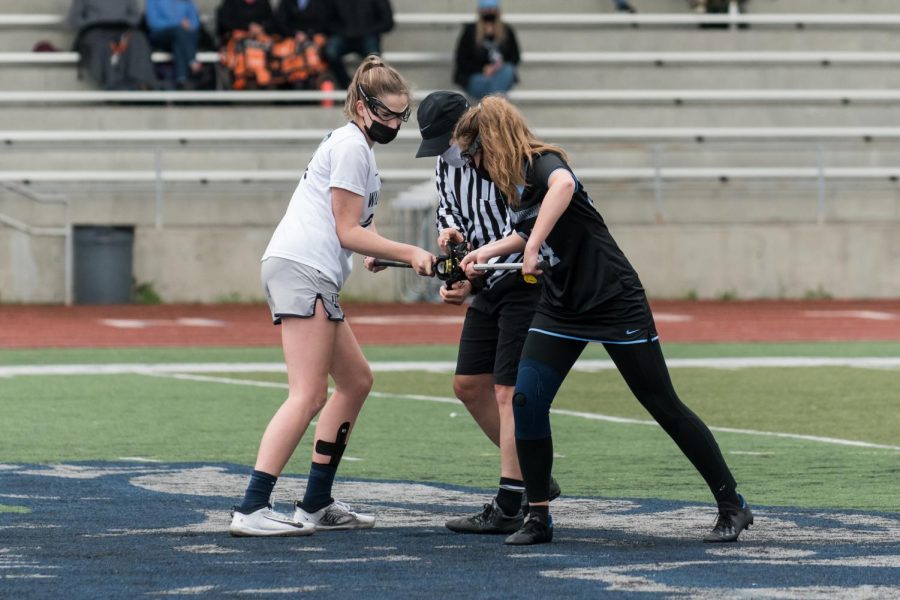What is a “draw”?
February 22, 2022
Maura Schramm, Class of 2021 alumni, takes the draw in the Cats’ final game agaisnt Mountainside. Schramm is now playing for Gerogia Tech’s club womens lacrosse team!
The first piece of the game to learn is called the “draw.” It happens at the start of each half and after each goal.
To set up for a draw, one midfielder is lined up on the midline, facing off against the opposing team’s midfielder. The remaining two midfielders are stationed at points around the circle depending on where they think the ball will fly after the ref’s whistle is blown.
The two players’ sticks are aligned parallel to the ground, and even with each other. The ball is sandwiched between the backs of their sticks. When the ref blows the whistle the draw-takers must push their sticks up and out; if the ball does not fly out above their shoulders, it results in a redraw. One important thing to note: the draw-takers must not move after the ref has set their sticks and begun to back away from them. If either player resituates themselves, or adjusts their grip, a foul is called, and the ball is given to the other team.
While the draw is being set up, the four defenders must stay behind their restraining line (usually the 30 yard line when played on a football field). The attackers stay behind their own restraining line on the mirrored side. However, when the ref swings an arm in a circle indicating possession has been won, they are able to advance up to the opposite restraining line (ex. An attacker can run all the way to the restraining line closest to their team’s goalie). This basically allows the attackers and defenders to travel two-thirds of the field.
During the 2021 season, Maura Schramm and Avery Lanz were the Cats’ usual draw-takers, switching off depending on the game situation. While Schramm’s draws were accurately placed and sent to the other two midfielders on the circle, Lanz’s specialties lay with self-drawing (meaning she controls the draw off of the draw herself).
I think it’s really fun.
— Alexis McIlmoil
Alexis McIlmoil, also a midfielder for the Cats, really enjoyed taking the draw, even if she wasn’t all that confident in it: “I think it’s really fun.” She went on to describe how it can be a point of stress during close games, and thus, “It was probably not the best to have me take it in dire situations.”
In many respects, the draw is an instrumental piece of the game: the more draws your midfielders control, the more opportunities you have to score and thus a higher likelihood of winning. If your team’s midfielders only control 25% of the draws, the opposing team consequently gets three times as many offensive possessions; and while these possessions don’t automatically lead to shots or goals scored, it puts considerably more stress on your defensive players.
Basically, the more draws your team wins, the better.
